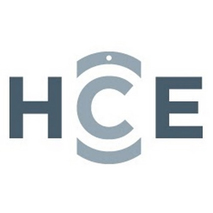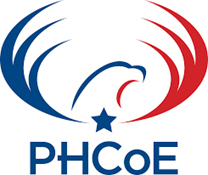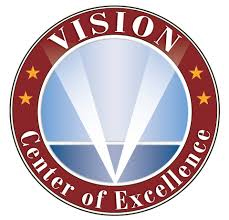This page provides a collection of information and links to research funding opportunities across the DoD and is provided as a resource to the research community.
All information and downloadable documents on this Website are published in good faith and for informational purposes only. Due to the dynamic and evolving nature of the World Wide Web, The Blast Injury Research Coordinating Office (BIRCO) will continue to monitor and update this page to ensure completeness and accuracy of the uploaded documents and external links.
SAM.GOV is the Official U.S. Government System for commercial vendors to find federal government procurement opportunities for their products and services.
Maximizes opportunities for small businesses to contribute to national security by providing combat power for our troops and economic power for our nation.
For more information: Small Business Innovation Research/Small Business Technology Transfer Opportunities

Using the Grants.gov system makes it faster, easier and more cost effective for grant applicants to electronically interact
with federal grant-making agencies. It also provides the following key benefits, among many others, to the grant community.
To access program announcements from US Army Medical Research and Development Command on Grants.gov: Select "Search Grants"
on the top left homepage ribbon and type in the keyword(s) - USAMRDC or USAMRAA.

The US Army Medical Research and Development Command (USAMRDC) funds a broad range of extramural research programs. Awards can be contracts, grants, or cooperative agreements. Research proposals can be submitted to the command through the USAMRDC Broad Agency Announcement (BAA) which is open for limited timeframes.

"The New Products and Ideas (NPI) website allows users to showcase their products for review by US Army Medical Research and Development Command subject matter experts. Submitters receive feedback in as little as 30 days. Some products currently in use by the military were first introduced through the NPI site."

The Medical Technology Enterprise Consortium (MTEC) is a 501(c)(3) biomedical technology consortium collaborating under an Other Transaction Agreement (OTA) with the U.S. Army Medical Research and Development Command (USAMRDC) that serves those who serve our nation.

The USAMRDC ORTA otherwise known as the Technology Transfer Office coordinates all intellectual property licensing on behalf of all US Army Medical Research and Development Command's subordinate laboratories from the federal sector to nonfederal parties.
The ORTA office at each subordinate laboratory coordinates Cooperative Research and Development Agreements (CRADAs), Material Transfer Agreements (MTAs), Interagency Agreements (IAAs), Nondisclosure agreements (NDAs ), and other technology transfer transactions.
The Defense Health Agency is currently reviewing and updating the processes for the Concept Submission Program. If you have a concept you'd like to submit for consideration at this time, please email it to dha.TBICoEinfo@health.mil.
The CDMRP fills research gaps by funding high impact, high risk, and high gain projects that other agencies may not venture to fund. While individual programs are unique in their focus, all the programs managed by the CDMRP share the common goal of advancing paradigm shifting research, solutions that will lead to cures or improvements in patient care, or breakthrough technologies and resources for clinical benefit. The CDMRP strives to transform healthcare for Service Members and the American public through innovative and impactful research.

The ERP funds research to develop an understanding of the magnitude of posttraumatic epilepsy (PTE) within the military and to expand
research into the basic mechanisms by which traumatic brain injury (TBI) produces epilepsy.
Example focus areas relevant to blast injury:

The JWMRP funds mature research projects close to yielding tangible benefits to military medicine. The JWMRP focuses on six program areas:
Medical Simulation and Information Sciences, Military Infectious Diseases, Military Operational Medicine, Combat Causality Care, Radiation
Health Effects, and Clinical and Rehabilitative Medicine.
Example focus areas relevant to blast injury:

The PRMRP funds research across the entire spectrum of medical research toward improving the health and well-being of
Service Members, Veterans, and their Families.
Example topic areas relevant to blast injury:

The TBIPHRP funds research efforts aimed at improving prevention, detection, and treatment of psychological health disorders
and TBIs. Research funded by TBIPHRP spans the translation research spectrum from basic research to clinical trials.
Example focus areas relevant to blast injury:

The VRP funds research efforts to improve and transform the care of military personnel affected by
diseases and injuries of the eye. The program focuses on funding innovative, military-relevant research
that addresses unmet clinical needs.
Example focus areas relevant to blast injury:
CNRM's mission is to conduct cutting-edge science that improves the lives of service members with TBI. We perform a range of robust research - with an emphasis on clinical trials - that studies military-related TBI and its comorbidities. Our goal is to build a substantial evidence base that enhances the Department of Defense's guidelines for TBI diagnosis and treatment.
 DVCIPM's mission is to leverage the best available evidence, clinical expertise, and collaboration to develop and communicate
consensus recommendations in support of Air Force, Army, Navy, and VA pain management practice, education, and research.
DVCIPM's mission is to leverage the best available evidence, clinical expertise, and collaboration to develop and communicate
consensus recommendations in support of Air Force, Army, Navy, and VA pain management practice, education, and research.
 EACE is the leading advocate for research and treatment of DoD and VA patients with extremity trauma and amputation. Working with
TRICARE, the Military Health System, VA, and other Centers of Excellence, the EACE will lead efforts to enhance collaboration between
the DoD and the VA extremity trauma and amputation care providers and conduct scientific research to minimize the effects of traumatic
injuries and improve clinical outcomes.
EACE is the leading advocate for research and treatment of DoD and VA patients with extremity trauma and amputation. Working with
TRICARE, the Military Health System, VA, and other Centers of Excellence, the EACE will lead efforts to enhance collaboration between
the DoD and the VA extremity trauma and amputation care providers and conduct scientific research to minimize the effects of traumatic
injuries and improve clinical outcomes.
 HCE fosters and promotes the prevention, diagnosis, mitigation, treatment, rehabilitation, and research of hearing loss
and auditory injury. The goal is to reduce the tangible and intangible costs of hearing loss and auditory injuries among
US military personnel and Veterans. HCE works with the VA and leads the cooperative effort to meet its goal.
HCE fosters and promotes the prevention, diagnosis, mitigation, treatment, rehabilitation, and research of hearing loss
and auditory injury. The goal is to reduce the tangible and intangible costs of hearing loss and auditory injuries among
US military personnel and Veterans. HCE works with the VA and leads the cooperative effort to meet its goal.
JTS' mission is to improve trauma readiness and outcomes through evidence-driven performance improvement. The JTS vision is that every Soldier, Sailor, Airman and Marine injured on the battlefield or in any theater of operations will be provided with the optimum chance for survival and maximum potential for functional recovery.
The NICoE is dedicated to improving the lives of patients and families affected by traumatic brain injury (TBI) through collaborative efforts with patients, families, referring providers, and researchers. Since opening on June 24, 2010, in Bethesda, Maryland, we have established a reputation for excellence in TBI and brain health clinical care, research, and education.
 PHCoE is uniquely positioned to collaborate across the DoD, VA, and other federal agencies to provide leadership and expertise,
inform policy, and drive improvements in psychological health outcomes. The center maintains five core strategic priorities:
support the services and combatant commands; improve care quality; increase access, reduce barriers, and encourage optimal use
of psychological health resources; advance the science of psychological health; and foster organizational development.
PHCoE is uniquely positioned to collaborate across the DoD, VA, and other federal agencies to provide leadership and expertise,
inform policy, and drive improvements in psychological health outcomes. The center maintains five core strategic priorities:
support the services and combatant commands; improve care quality; increase access, reduce barriers, and encourage optimal use
of psychological health resources; advance the science of psychological health; and foster organizational development.
TBICoE works at the macro-level, screening and briefing service members heading into theater, performing pre-deployment provider training at military hospitals and clinics, gathering data mandated by Congress and DOD, and overseeing research programs. TBICoE develops educational materials for military and civilian providers, and for service members, veterans, and their families.
 VCE leads and advocates for programs and initiatives with the following three inter-related goals: to improve vision health,
optimize readiness, and enhance quality of life for Service members and Veterans.
VCE leads and advocates for programs and initiatives with the following three inter-related goals: to improve vision health,
optimize readiness, and enhance quality of life for Service members and Veterans.
By working to improve vision health, optimizing readiness and enhancing quality of life for Service members and Veterans,
VCE promotes collaboration, facilitates integration and serves as an advocate for vision across DoD and VA healthcare systems.
Further collaborative efforts with other federal healthcare organizations, academia, and private sector organizations allow
VCE to enhance development of VCE program priorities for research and quality care initiatives.
Your 15 minute session will timeout in approximately 10 minutes.
If you're in the middle of entering information, please close this warning and save your progress (if possible) or finish up your task.
If your session fully times out, you will lose any un-saved work.
Your current Blast Injury Research Program session has expired.
Your next click will take you away from the private area, and you will lose any work you have in-progress.
Please enter your email address, and try again.